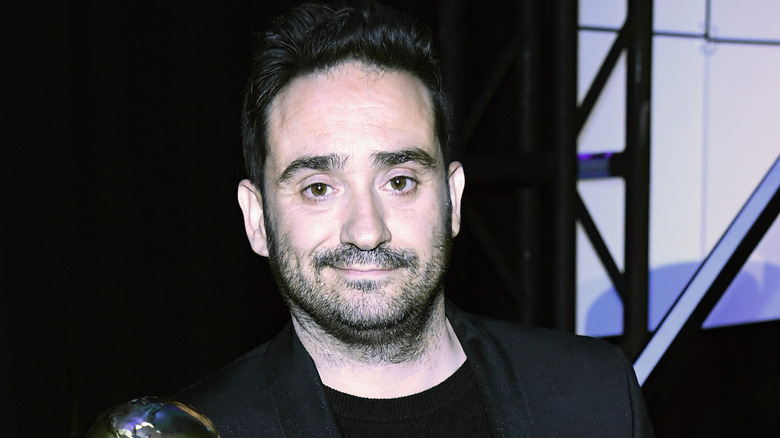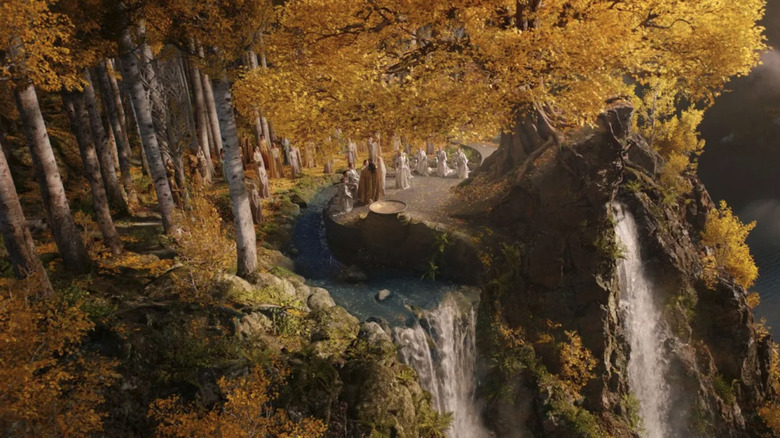The Rings Of Power: Director J. A. Bayona Was Inspired By Art (Not Peter Jackson's Films)
"The Lord of the Rings: The Rings of Power" marches to the beat of its own drum. The series' showrunners, JD Payne and Patrick McKay, are both J. R. R. Tolkien fans with a distinct five-season vision that has guided their project from day one. While exciting, the serialized nature of the story is a deviation from the movie format that audiences are used to for Tolkien adaptations.
The show is also set in the Second Age, which means it takes place thousands of years before the iconic "The Lord of the Rings" story that we all know and love. There are a few throughlines, like the immortal Elf Galadriel, Aragorn's Númenórean ancestors, and of course, Sauron and his Ring. Everything considered, though, the bulk of the show is a wholly new experience for Middle-earth fans.
It's a fact that the creative team was well aware of when they sat down to come up with their iteration of Middle-earth. In an interview with Collider, J. A. Bayona (who directed the first two episodes of the eight-part Season 1) revealed that the group was also well aware that the differences between their show and "The Lord of the Rings" meant Peter Jackson's movies couldn't be too influential on their creative process.
Specifically addressing the question of visual language and how much the group drew from Tolkien's books versus Jackson's trilogy, Bayona said, "Well, I read the books again. They were an incredible help because Tolkien is so detailed in everything that he describes that it was a great help." The Spanish director added that they also looked for inspiration in other art, though he was careful to clarify, "Not the movies because we're talking about a different age, so the movies were not really helpful."
Bayona looked well beyond Tolkien for visual inspiration
J. A. Bayona may have started with J. R. R. Tolkien's writings and resisted the temptation to mirror Peter Jackson's Third Age vision, but the creative team didn't stop there. The group dug deep, focusing on many areas of art and looking across both film and other mediums to inspire their new Middle-earth creation.
"I remember talking to Kate [Hawley], the costume designer, or Ramsey [Avery], the production designer," Bayona detailed, "I referenced paintings and movies, but not Peter Jackson's movies. I remember, like talking about the Dwarves, I referenced a lot of Tarkovsky movies and Russian movies."
The connection between Andrei Tarkovsky's distinctly poetic, emotional, atmospheric approach to filmmaking and the Dwarves in "The Rings of Power" is easy to spot. Whether it's the many-pillared halls of Khazad-dûm or any other area in the show's geographically scattered, visually stunning approach to storytelling, it's abundantly clear that Bayona, Hawley, Avery, and company were drawing on a multi-faceted fount of inspiration at every step.
There is an occasional reminder of Jackson's films (the design for the Balrog comes to mind), but by and large, the experience is distinctly unique — and clearly infused with a classical approach to visual storytelling. In fact, Bayona said as much, finishing his dissertation on the inspiration for the visuals by saying, "Most of them were references of old movies or paintings, not recent movies, because we were creating a world from scratch that had nothing to do with anything we have seen before."
Peter Jackson may have created the gold standard for Middle-earth visuals 20 years ago, but "The Rings of Power" is showing that others can match that standard in their own exceptional way.

